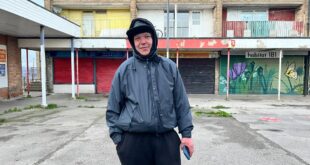AMENDS : The Oudewater museum’s director and mayor
Photo credit: Instagram/Museum de Heksenwaag
Approximately 70,000 people fell victim to the “witch hysteria” that seized Europe and the New World between the 15th and 17th centuries.
Even today “witch hunt” will describe the pursuit, often in the name of law, order or personal preferences, of people who are deemed to be politically or socially dangerous.
Three feminist campaigners – Susan Smit, Bregje Hofstede and Manja Bedner – founded the the National Witches Monument foundation in 2023 and plan to set up a monument to the women who were tortured, hanged or burnt alive.
Official records show that 248 were put to death in the Netherlands over the centuries but, as their website points out, it is impossible to know exactly many people were killed.
“The archives are incomplete, and the people who succumbed to torture during interrogation are often not recorded at all. However, hundreds of their names are known,” the webpage says.
The three campaigners have now raised €35,000 and are asking the public to help them decide where they believe the monument should be located.
The towns of Roermond, Oudewater and ‘s Heerenberg (Montferland) have put themselves forward, as all have a history of witch trials, hangings and burnings.
To Roermond goes the unwelcome distinction of having put 89 women to death but Oudetwater is a strong candidate as the accused had a fairer deal there than in many other towns or cities.
Those accused of witchcraft at least had chance to prove their innocence, as the town had a royal dispensation to issue certificates of innocence if the alleged witch’s weight matched their body mass, proving they were too heavy to fly on a broomstick.
The weighing mechanism can still be seen the Museum de Heksenwaag (Witches Museum) in Oudewater, which was one of the 20 towns that commemorated the National Witches Monument Foundation’s Action Day last June by laying white roses in places that had executed witches in the past.
Isa van de Wee, the Oudewater’s museum said the town would be an ideal site, as it actually protected victims, practically all of whom were women.
“Perhaps they were a little different, perhaps they didn’t take care of their surroundings,” Van de Wee told the media.
“Maybe they had a very strong personality and stood up for themselves, or simply knew a lot about herbs and how to heal,” she said, going on to refer to the witch-hunts that still occur.
“You can disagree with others but you should not judge them. And that’s a message for all times.”



